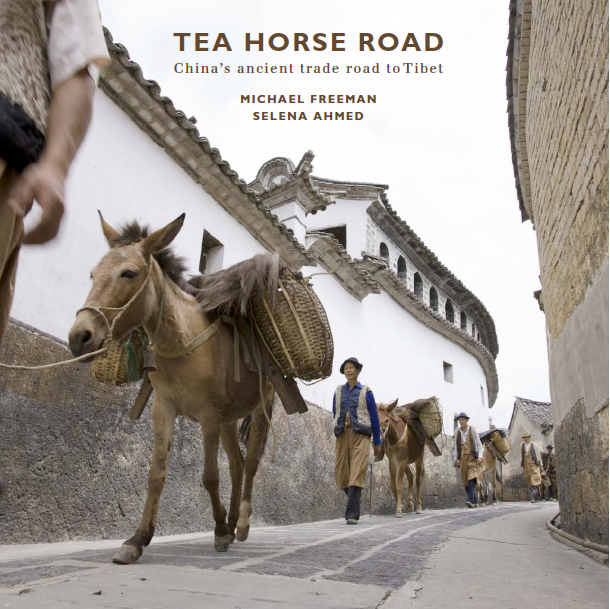Tea Horse Road: China’s Ancient Trade Road to Tibet
Posted in Around the Garden, Shop/Book Reviews on May 18 2011, by Selena Ahmed
Ed. note: Selena Ahmed, ethnobotanist and author of the gorgeous new book Tea Horse Road will be at the Garden for a book signing this Saturday, May 21 at 3 p.m at Shop in the Garden. I first saw Selena’s book in a colleague’s office. The absolutely stunning photographs, taken by Michael Freedman, drew me in, but it is Selena’s tales that bring this fascinating book to life. We are currently working with Michael, who is traveling China, to put together a post of his photographs, so stay tuned. But why wait? Pick up a copy of Tea Horse Road this Saturday. You won’t be disappointed.
 My new book, Tea Horse Road: China’s Ancient Trade Road to Tibet, with photographer Michael Freeman explores lives and landscapes along the world’s oldest tea trading route. Our journey starts in tropical montane forests in China’s southern Yunnan Province. This is the birthplace of the tea plant, Camellia sinensis (Theaceae). The cultural groups of Yunnan including the Bulang, Akha have produced and consumed tea for centuries for its well-being and stimulant properties. They traditionally grew tea plants as trees of several meters tall without the use of chemical fertilizers, pesticides and herbicides.
My new book, Tea Horse Road: China’s Ancient Trade Road to Tibet, with photographer Michael Freeman explores lives and landscapes along the world’s oldest tea trading route. Our journey starts in tropical montane forests in China’s southern Yunnan Province. This is the birthplace of the tea plant, Camellia sinensis (Theaceae). The cultural groups of Yunnan including the Bulang, Akha have produced and consumed tea for centuries for its well-being and stimulant properties. They traditionally grew tea plants as trees of several meters tall without the use of chemical fertilizers, pesticides and herbicides.
While tea cultivation spread where climatic conditions allowed, the practice of drinking tea reached far beyond. During the 7th century, the Tibetan kingdom to the north of Yunnan came into contact with tea, and the drink soon became central to the Tibetan people’s diet. Tea functioned to reduce the oxidative stress of Tibet’s high altitudes and as a dietary supplement in an environment with limited fruit and vegetable production. These same extreme conditions mean that tea has remained an imported item from tropical and sub-tropical areas in China’s Yunnan and Sichuan provinces. The demand for tea led to the creation of a network of trails extending more than 3,000 kilometers, carved through forests and mountains, with Lhasa at its core. This network collectively became known as the South West Silk Road or Cha Ma Dao, the Tea Horse Road.
However, tea was only one side of the trade equation: China was in constant search for warhorses that made its armies more mobile allowing the kingdom to maintain control over the empire. Abundant natural resources along with tea and horses were exchanged on the Tea Horse Road over the course of 2 millennia, linking cultures and natural resources beyond their surroundings. In its day, the Tea Horse Road touched the lives of many. These were the tea farmers on the southern mountains, the caravan leaders, the Tibetan lados skilled at traversing high passes and the porters with 100-kilo loads on their backs. This book is their story, narrated against the backdrop of some of the world’s most rugged and powerful landscapes.
Trade along the Tea Horse Road declined in the 20th century as horses ceased to have a major military use. Roads were paved allowing for more efficient transport, and policies and markets transitioned. As the Tea Horse Road acquires a historical presence, it is easy to forget its vital former role of maintaining community health, sustainable agriculture, livelihoods, and cultural exchange.
The research for my new book, Tea Horse Road: China’s Ancient Trade Road to Tibet, is partly based on my doctoral study at The New York Botanical Garden supervised by Dr. Charles M. Peters and guided by NYBG curators Drs. Amy Litt, Michael Balick, and Christine Padoch. My goal for this book was to disseminate findings from my doctoral study to a wide audience. The narrative is accompanied by Michael Freeman’s stunning visual documentation and is published by River Books.

